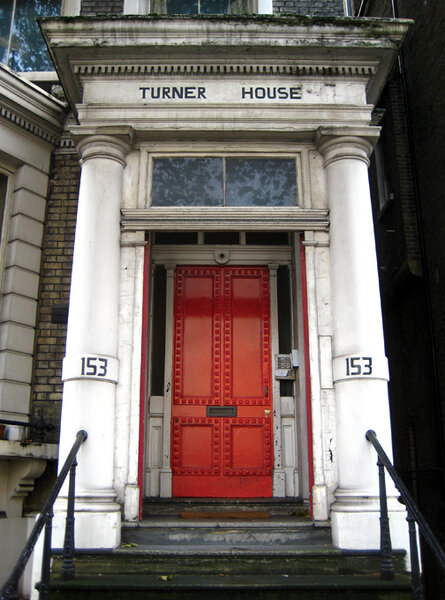Alfred Hitchcock's old home plays host to J.M.W. Turner admirers
Loading...
| London
• A local, slice-of-life story from a Monitor correspondent.
The address 153 Cromwell Road, in London’s Earl’s Court neighborhood, may ring a bell only with the most ardent devotees of Alfred Hitchcock, whose residency there between 1926 and 1939 is noted by a shiny blue plaque. The building’s facade looks time-worn; an inscription above the entrance reads “Turner House.”
These days, the address is linked to the Independent Turner Society, a group of admirers of the 19th-century painter and printmaker J.M.W. Turner, which, for the past 20 years, has been pushing for the building of a gallery to unite the works he left to Britain, as requested by the artist’s will. That the society meets in the building where the legendary director once lived is entirely coincidental: Selby Whittingham, the society’s founder who lives on the first floor, says he’d been there for 25 years before he learned Hitchcock had occupied the two floors above him.
Whittingham and his colleagues believe the British government has not properly treasured Turner’s great body of work – some 20,000 watercolors and drawings and more than 300 oil paintings – that the artist bequeathed to Britain upon his death in 1851, with the wish that they be housed and displayed together. Some of Turner’s works went to London’s National Gallery, but the space was too small to accommodate all of them.
In 1910, the Duveen wing opened at the Tate Gallery (now the Tate Britain) to house some of the artist’s bequest. But it was the opening of the Tate’s Clore Gallery in 1987 that provided an expanded space for his drawings and prints, and some proclaimed the master’s dying wish was at last fulfilled.
Not everyone agreed. For one, the Clore Gallery held many but not all of Turner’s works. “[The space] needs to be several times larger to house all of the oils and to give fair coverage to the watercolors and prints,” says Whittingham, an art historian and Turner scholar who founded the Independent Turner Society around the time the Clore opened.
In 2011, society members plan to use the 150th anniversary of a parliamentary report stating the paintings should be kept together in a building connected to the National Gallery to once again push for a new exhibition space.





